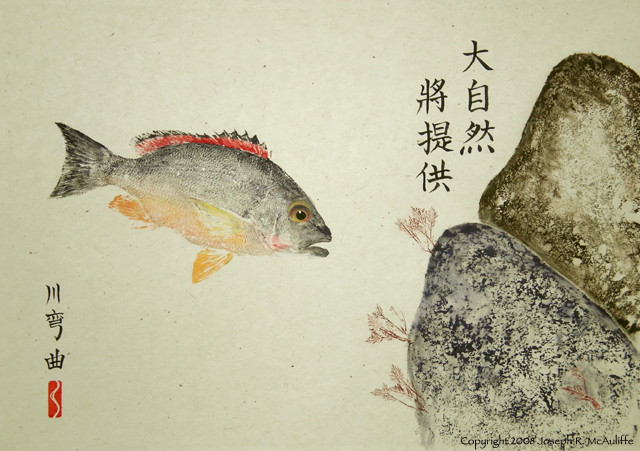
A black-tailed snapper (Lutjanus fulvus) hunts amidst rounded boulders of volcanic rock in Hawaii. I caught this fish on the western side of Maui, fishing with my sister Jean on a wave-swept crag between Maalaea and Lahaina. It was a very memorable day at a place where volcanic rock meets the sea. The occasional “big one coming in” kept us on our toes and gave us an occasional drenching. Although we forgot to pack an important part of the day’s lunch, nature nevertheless provided a surprise that afternoon.
The black-tailed snapper is not native to the Hawaiian islands, but was purposefully introduced from French Polynesia around 1960. The Hawaiian Islands naturally contained few species of snappers and groupers because of their geographic isolation. Management agencies decided to “fill” the unoccupied niche for medium to large predator fish by purposely introducing species from other areas. Few of those introductions became established and naturalized; the black-tailed snapper is one that took hold and is now naturalized. This snapper is not particularly abundant and may not greatly impact the native marine ecosystems. However, another snapper introduced to Hawaii, the bluestriped snapper (Lutjanus kasmira) has in many places become the dominant species potentially displacing native species and altering food webs.
The six characters read from top to bottom and right to left and in Mandarin Chinese say “da zi ran jiang ti gong,” which means “Nature will provide.”
Size: 22 x 16 inches (2005)
Return to Gallery 5.